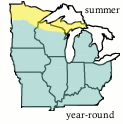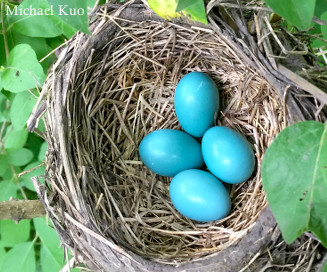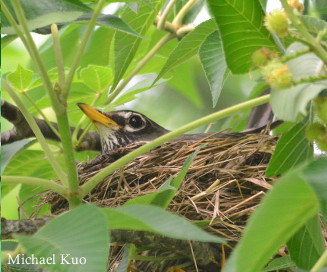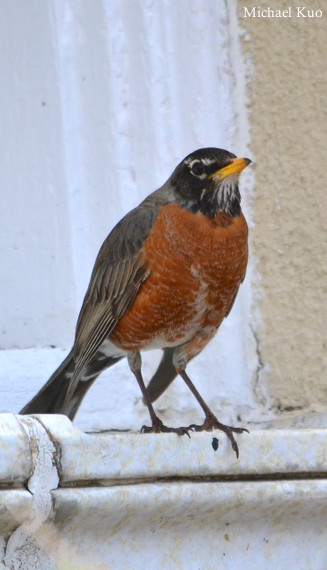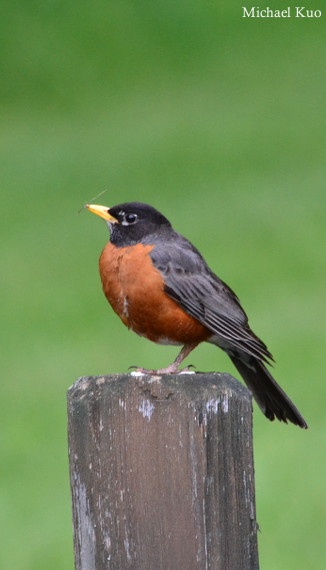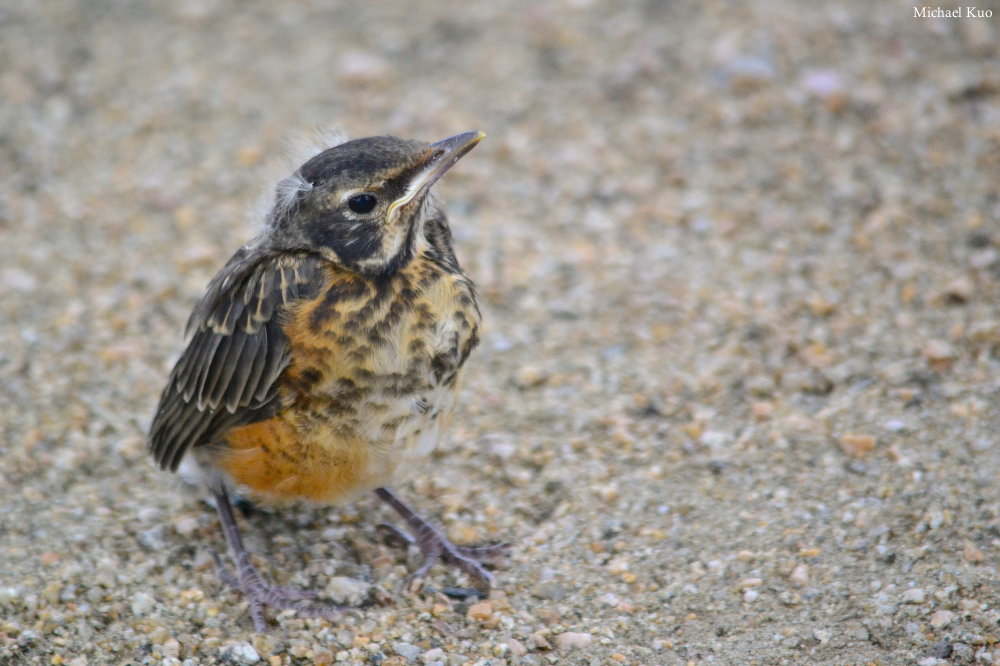The American robin's scientific name, Turdus migratorius, does not actually mean "the migrating turd," despite appearances. Turdus is actually Latin for "thrush" (the bird, not the throat condition) and the etymology of the English word "turd" is completely unrelated. Try telling that to a robin, however, and you are likely to receive a robin eye roll in return, since its unfortunate name is still Turdus migratorius, regardless of etymology. Or maybe your robin will, like the one above, tell you more directly what he thinks of your etymologies.
Robins are probably the most well-known and universally recognized birds in North America, so a detailed description is hardly necessary. They are similar to other thrushes in stature and size, but are easily separated by their orange-red breasts—and they look vaguely like brown thrashers, but not on close examination. Key features for the Midwestern version of the American robin include the orange-red breast, the dark gray upper parts and black head, the white marks around the eye, and the yellow bill.
Females tend to have paler heads and duller orange breasts, but figuring out the sex of robins can be very difficult. Juveniles have, depending on their age, whitish to pale orange breasts with prominent blackish spots.
The well-known cheerily, cheerily song of the American robin is distinctive, but can be confused with the songs of other birds (especially tanagers) in woodland settings.
Robins feed on a wide variety of foods—from worms to insects to berries—and can be found in fields, woods, and in urban areas. Many robins migrate south of the Midwest for winter, but some hang around, especially below the Great Lakes.


